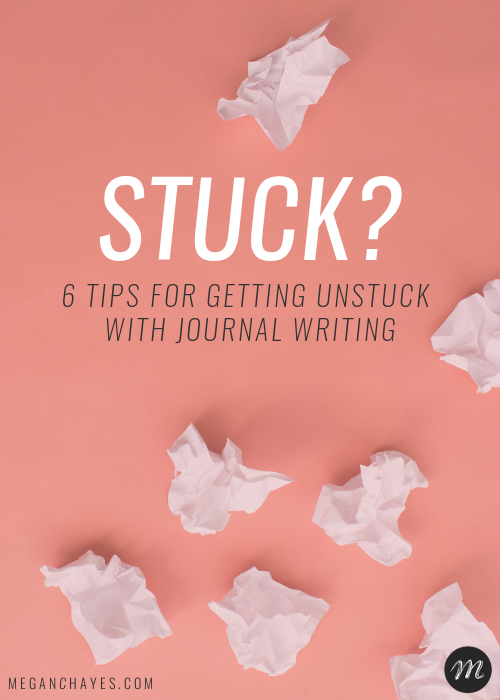We’ve all been there. You’re engine is revving but your tires are stuck in the mud. You want to be someone, get somewhere, do something; to make yourself proud, to escape the day job, to pay the bills, to finally get over it.
Whether it’s a break up you can’t get past or you’re fuzzy on your plans for world domination, here are six tips for getting unstuck with journal writing.
You’ll need: A pen, paper, & a commitment to possibility.
- Write this sentence-starter: “Being a bit stuck right now is okay because…” Then finish it. Instant self-compassion. (FYI: compassion is always the best place to start.) Rinse and repeat a few times.
- …then this one: “I want to get unstuck because…” This gets to the root of your longing, and sometimes the root of your problem. If you want to get unstuck to impress your parents or pals, for example, then it might be a lack of integrity in your goals that is keeping you in stalemate. Explore this a little.
- Create a simile for your stuck-ness. (Like the metaphor of tires I used in the opening paragraph.) Think of jazz-singer Norah Jones and her song Turn Me On, which is basically a simile party and all the similes were invited: “Like a flower waiting to bloom… Like a light bulb in a dark room.” I find seasonal analogies helpful, because they remind us that nature is always in flux, i.e. that stuck-ness is never permanent. Something like, “I feel like a leafless, lifeless winter tree waiting for the spring.” Use your imagination. Pick what feels right.
- Build on your simile. If you’re like my leafless tree, then the good news is that spring is coming, you might just have to wait a while. If your tires are stuck in the mud, then you might need a good push from a friendly passer-by. If you’re Norah’s light bulb then you might need someone to (ooer!) turn you on. What’s the solution to your simile? How might that solution relate to your real-life situation?
- Switch your perspective. There are lots of ways to do this, you can ‘zoom out’ and pretend you’re looking back to this period of your life from ten years in the future. What would you say to comfort yourself? Or, you can pretend a close friend of yours is feeling stuck. What would you tell them? Or, you can imagine your childhood self and what it would be like to have that little you in your arms. How would you reassure her? The key is to see the situation from elsewhere, because amidst the proverbial trees we often struggle to see the wood.
- Write some happy endings. The trick with this one is to be playful, have fun, and second-guess yourself a little. The first time you write a happy ending it will probably be some variant of “and everything worked out exactly as I wanted. The End.” Bad news: it probably won’t. But sometimes, I promise you, it works out so much better. Write three or four alternative, imaginative happy endings to get you unstuck from thinking everything has to look the way you thought it would.
These tips are not instant fixes, more like de-icers for your car windshield (here I go with the similes again…) The frost might keep coming, but you’ve got some tools to keep it at bay. As a bonus tip, stop using the word ‘stuck’ and start thinking of the word ‘becoming.’ The chrysalis, the rose bud, the grain of sand in an oyster shell… we wouldn’t think of any of these as stuck would we? Rather, they are in a state of becoming, as we are.
“Life is a process of becoming, a combination of states we have to go through. Where people fail is that they wish to elect a state and remain in it.” – Anaïs Nin
Sometimes we can stay in these stifled periods of becoming for months, even years at a time, but with trust and self-compassion, these can become periods of deep insight and even, ultimately, growth.
Happy writing.
